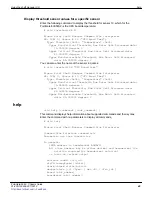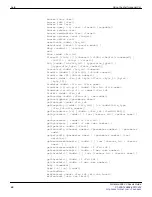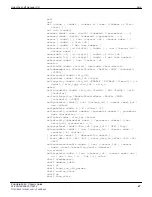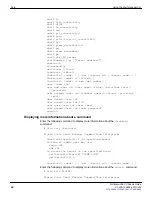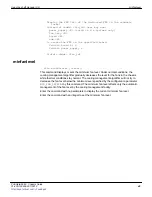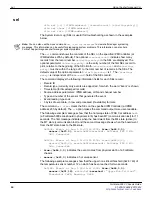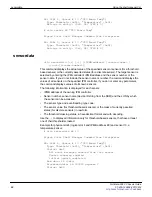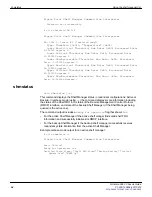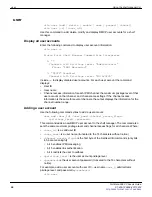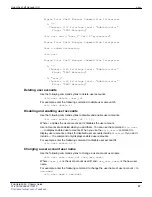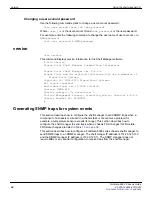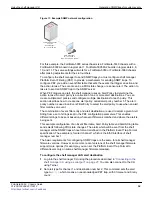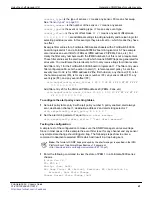
Using the shelf manager CLI
Generating SNMP traps for system events
FortiGate-5060 Chassis Guide
01-400-129494-20110912
59
•
Figure 11: Example SNMP network configuration
For this example, the FortiGate-5000 series chassis is a FortiGate-5140 chassis with a
FortiSwitch-5003A board in logical slot 1, FortiGate-5005FA2 boards in logical slots 6, 8,
10, and 11. The same settings will work for a FortiGate-5050 or FortiGate-5060 chassis
after making adjustments for the slot numbers.
To configure the shelf manager to send SNMP traps you must configure shelf manager
Platform Event Filtering (PEF) to provide a mechanism for sending SNMP traps. To
configure PEF you add an event filter table that sets the events that trigger an action and
the action to take. The events can be a FRU state change or a sensor alert. The action to
take is to send an SNMP trap to the SNMP server.
When PEF triggers an alert, the shelf manager uses an Alert Policy to determine the
action to take. An alert policy is a collection of one or more alert destinations. You can
create multiple alert policies and configure multiple destinations for each policy. This
section describes how to create one alert policy, called alert policy number 5. The alert
policy number is used in an Event Filter Entry to select the alert policy to use when an alert
filter matches an event.
The combination of event filter entry and alert destination are used to select a given Alert
String from a set of strings kept in the PEF configuration parameters. This enables
different strings to be sent based on what event filter was matched and where the alert is
being sent.
This example configuration of an Event filter table, Alert Policy table and Alert String table
sends alerts following FRU state changes. The alerts which will be sent from the shelf
manager will be SNMP traps whose format is defined in the Platform Event Trap Format
specification. The example is for alert channel 1 which is the Eth0 interface of shelf
manager number 1.
The basic requirements for configuring SNMP traps are the same for all shelf manager
firmware versions. However, some more recent versions of the shelf manager firmware
support more options (for example, you can set the Platform Event Trap Format to
different levels only on some shelf manager firmware releases).
To configure the shelf manager LAN alert destination
1
Log into the shelf manager CLI using the procedure described in
shelf manager CLI using a serial port” on page 27
. You can also connect to the CLI
using Telnet.
2
Set alert type for channel 1 and destination number 2. This command sets the alert
type to
0 0 0
which means an unacknowledged PET trap, with 0 timeout and 0 retry
count:
FortiGate-5000 series
Chassis
Shelf Manager
IP: 172.20.120.150
SNMP Manager
IP: 172.20.120.11
MAC: 00:1A:A0:2F:BC:C6
F
iG
000
i

